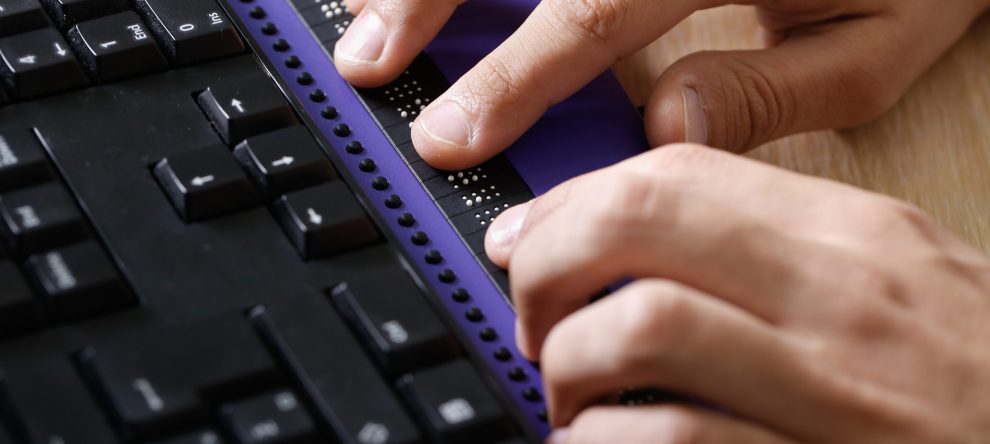![]()
All of us work with technology on a daily basis, but many times we aren’t aware of the equipment, tools and items that are available to assist us with tasks we find difficult. Perhaps you don’t need any help at this point in your life, but according to the World Health Organization, while 10% of the world’s total population has some form of disability regardless of age, that figure rises to 20% for individuals over 70 and 50% of those aged 85 or over!
The other thing is, while you may still be young, if you suffer any type of injury you may find yourself relying on Assistive Technology (A.T.) to get you through too. My sister fell on the ice years ago and broke her wrist. Today, she cannot write using a regular ink pen, but relies on an oversized pen with a special grip instead. Any of us can find ourselves struggling to adapt to injury or illness at any age.
There are many kinds of A.T. items you can find to assist you with most of the difficulties you may be dealing with. For instance, if you are finding it hard to read the text of the articles you’re working with on-line, did you know that Microsoft has a program installed in all of its’ Windows programs called “Narrator” that will read out loud to you? It’s probably not the best program for someone with serious problems, but there are times it would be very helpful to most of us who are getting a little older.
Then there are ergonomically designed chairs for those with back problems, magnifying glasses for those with vision limitations, hearing loops and aids for those with hearing loss, recorders you can carry with you to talk with people if you can’t speak, knee-scooters, wheeled/seated walkers, wheelchairs (both manual and electric) and transfer chairs. When a family member had surgery on her knee several years ago, I picked up a transfer chair for her. It made it so much easier to get her to her doctor appointments and physical therapy. A transfer chair is similar to a wheelchair, except it has small wheels and must be pushed by someone other than the user unless that person can scoot along using his or her feet to propel forward.
And there is more: word prediction software that attempts to guess what the user is typing, Speech-recognition software that will type on the computer screen the words you speak into a microphone. Programs such as Dragon have a greater vocabulary and allow you to send messages instantly by voice and create documents across Office applications. If you are in school or if you are responsible for taking notes at meetings, then Computer-Assisted Note Taking products may prove helpful to you. You can find programs that take down everything that is said, or those that focus on the core topic of a meeting or lecture.
You may want to try a Reading Pen, a portable pen-shaped scanner that uses a dictionary and thesaurus and reads words aloud as you scan them. There is also Livescribe’s Pulse Pen, a ballpoint pen loaded with a digital recorder that so you can take notes and record at the same time. The information it records can be uploaded to your PC or Mac.
The list of items goes on and on, all items designed to make life easier on those of us with disabilities. A.T. can enhance your ability to work at the optimum level and can make life so much easier! If you’re not sure what assistive technology device is right for you, consider contacting your local Center for Independent Living (CIL) to discuss your needs with an Assistive Technology Specialist. The technology you need probably already exists; you just need to find it.
Christine Wistrom is part of the GovLoop Featured Blogger program, where we feature blog posts by government voices from all across the country (and world!). To see more Featured Blogger posts, click here.





Leave a Reply
You must be logged in to post a comment.